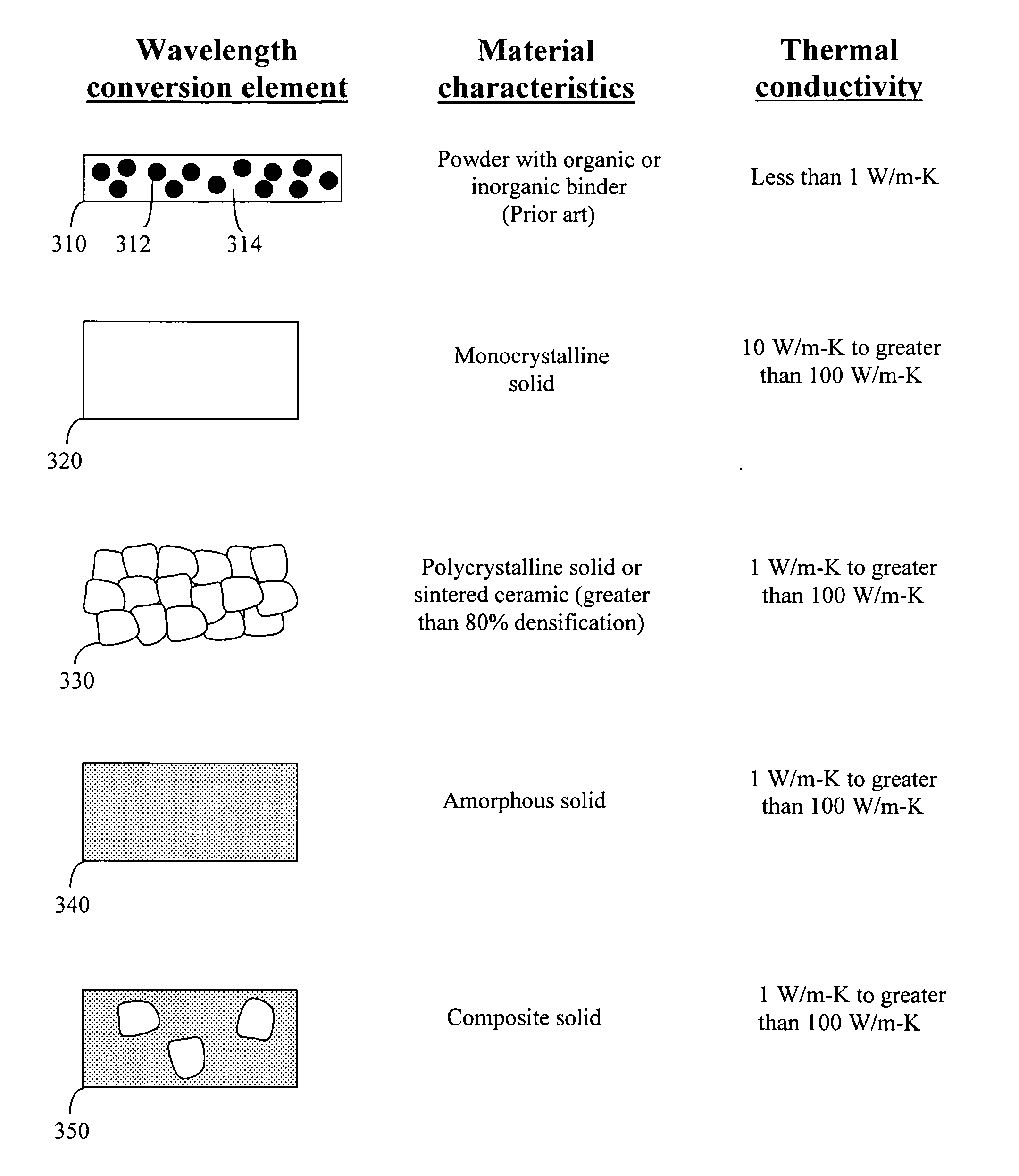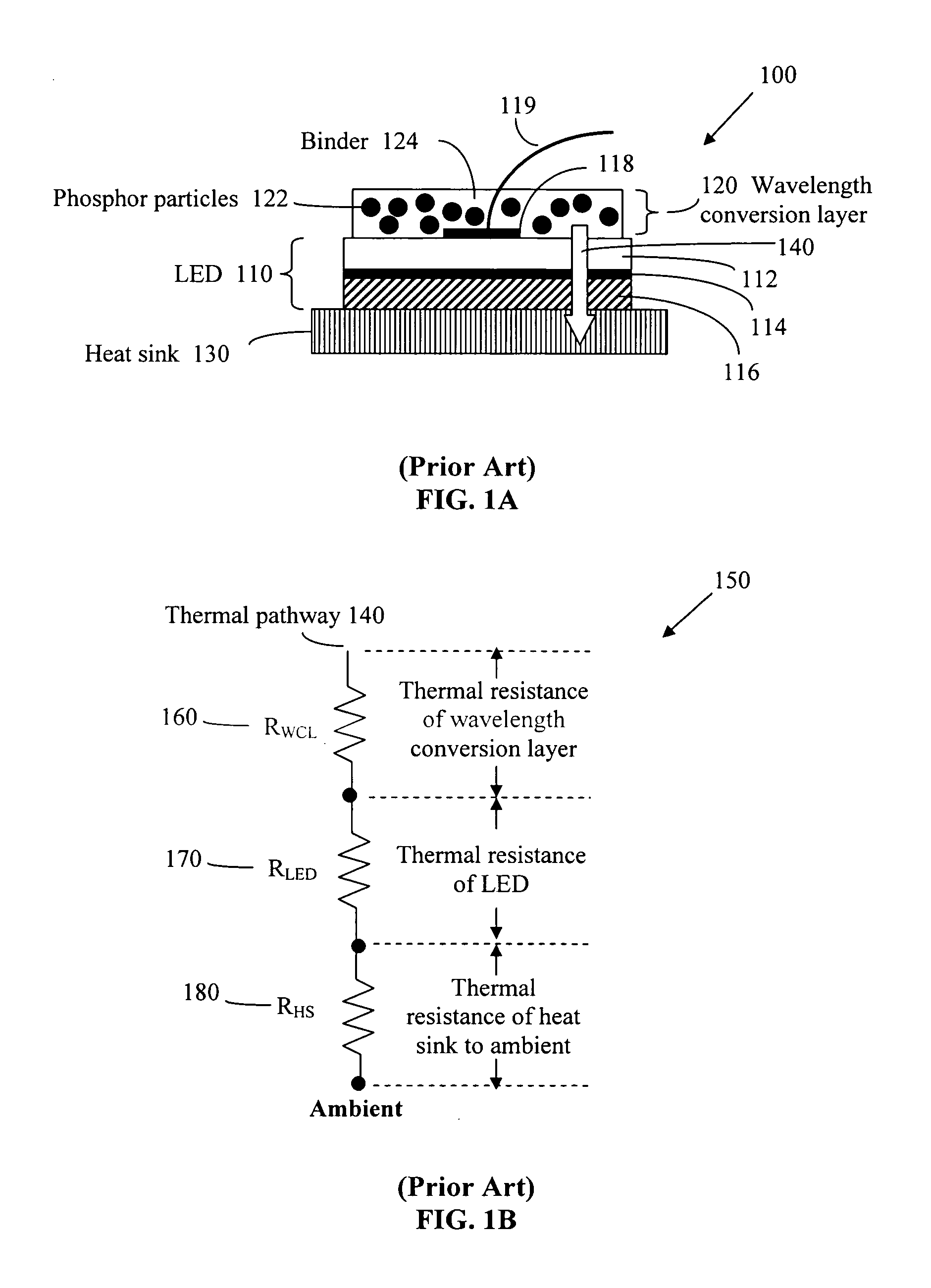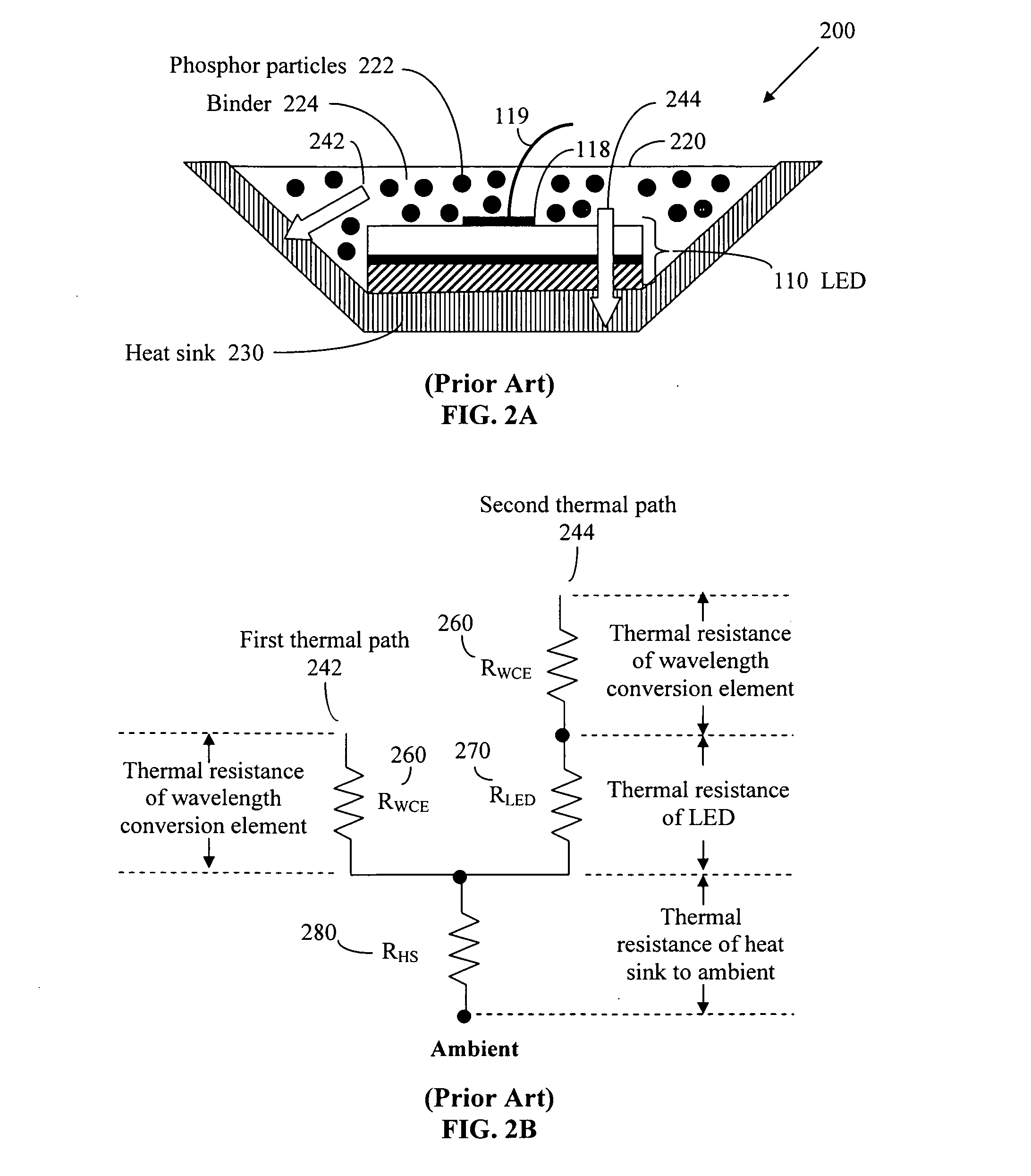Compact light conversion device and light source with high thermal conductivity wavelength conversion material
a wavelength conversion material and light conversion technology, applied in the direction of semiconductor devices, electrical devices, photovoltaics, etc., can solve the problems of significant local heating within the wavelength conversion material, thermal quenching of the wavelength conversion and light emission, and subsequent reduction of the emitted light flux, so as to facilitate the formation of an electrical interconnection, reduce the amount of wavelength conversion elements, and reduce the effect of light outpu
- Summary
- Abstract
- Description
- Claims
- Application Information
AI Technical Summary
Benefits of technology
Problems solved by technology
Method used
Image
Examples
Embodiment Construction
[0031]The preferred embodiments of the present invention will be better understood by those skilled in the art by reference to the above listed figures. The preferred embodiments of this invention illustrated in the figures are not intended to be exhaustive or to limit the invention to the precise form disclosed. The figures are chosen to describe or to best explain the principles of the invention and its applicable and practical use to thereby enable others skilled in the art to best utilize the invention.
[0032]Compact, high-intensity light conversion devices and compact, high-intensity, solid-state light sources utilize wavelength conversion materials that preferably have a thermal conductivity greater than 1 watt per meter per degree Kelvin (W / m-K). Exemplary wavelength conversion materials are monocrystalline solids, polycrystalline solids, substantially densified ceramic solids, amorphous solids or composite solids. Substantially densified ceramics are ceramics that have prefer...
PUM
| Property | Measurement | Unit |
|---|---|---|
| reflectivity | aaaaa | aaaaa |
| particle sizes | aaaaa | aaaaa |
| reflectivity | aaaaa | aaaaa |
Abstract
Description
Claims
Application Information
 Login to View More
Login to View More - R&D
- Intellectual Property
- Life Sciences
- Materials
- Tech Scout
- Unparalleled Data Quality
- Higher Quality Content
- 60% Fewer Hallucinations
Browse by: Latest US Patents, China's latest patents, Technical Efficacy Thesaurus, Application Domain, Technology Topic, Popular Technical Reports.
© 2025 PatSnap. All rights reserved.Legal|Privacy policy|Modern Slavery Act Transparency Statement|Sitemap|About US| Contact US: help@patsnap.com



